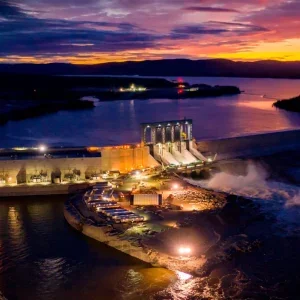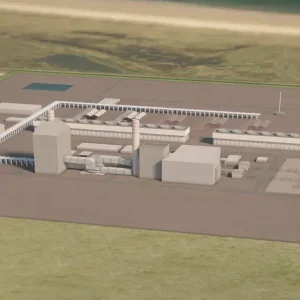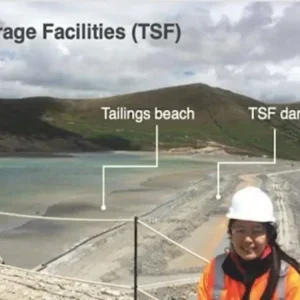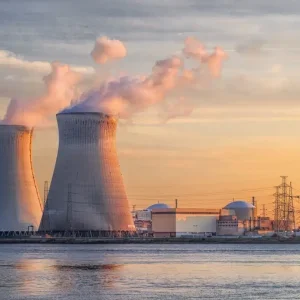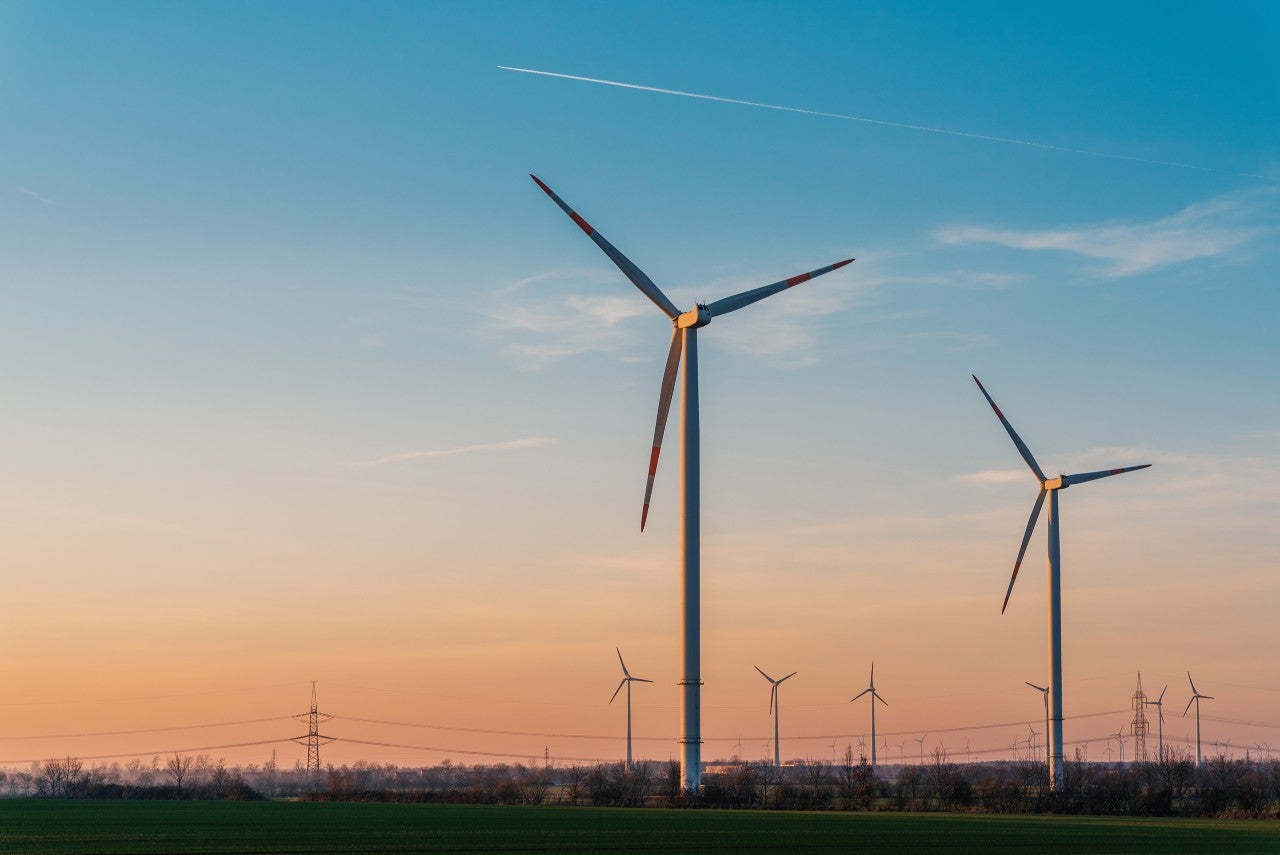
As wind energy has become more cost-competitive, onshore turbines are increasing in size faster than ever before. Elly Earls meets Feng Zhao, head of strategy and market intelligence at Global Wind Energy Council (GWEC), and Daniel Laird, director of the National Wind Technology Center (NWTC) at the US government’s National Renewable Energy Laboratory (NREL), to find out why logistical challenges and social acceptance are the only things preventing them catching up with their offshore counterparts.
The world’s first onshore wind farm, consisting of 20 wind turbines each rating 30kW, was installed in the US in 1980. The first offshore wind project was launched in Denmark 11 years later, featuring 11 turbines with a total 450kW capacity. Turbines slowly grew in capacity to 1.5MW, then 2MW, at which point experts were convinced that was the biggest they could get.
However, not content to be constrained by mere opinion, turbine manufacturers kept developing their technology, with the likes of Siemens, GE and Vestas continuously pushing the envelope on size and rating. GE’s Haliade-X offshore turbine prototype, based in Rotterdam, the Netherlands, began producing 14MW in 2021 with a 220m rotor and 107m blade.
In 2022, Vestas is set to release a 15MW offshore prototype in Denmark – each blade of which will be 115.5m long, giving it a total height of 261m. Chinese wind turbine manufacturer MingYang has even bigger plans – its 16MW offshore wind turbine with 118m-long blades and a rotor diameter of 242m will also debut in 2022, and the Global Wind Energy Council (GWEC) says there’s still a long way to go.
By 2030, the GWEC’s latest report predicts, the industry could be looking at 20MW offshore wind turbines with a rotor diameter of more than 245m.
While wind energy’s story started on land, offshore turbines have been able to grow much larger than their onshore counterparts in recent years. At sea, there are fewer transportation, logistical and regulatory issues and no nearby residents are worried about visual or sound pollution in their backyards.
Yet, as wind energy has become more cost-competitive – with feed-in tariffs switching to auctions and wind power increasingly having to vie for customers with the likes of solar PV – onshore turbines are increasing in size faster than ever before.
As Daniel Laird, director of the National Wind Technology Center (NWTC) at the US government’s National Renewable Energy Laboratory (NREL), explains, this trend is not just out of a love for larger turbines. “The higher you go, the better the wind resource. Larger turbines, especially on taller towers, allow you to access higher wind speeds. They can also be more cost-effective because you have fewer turbine foundations, fewer roads within the wind plant, fewer crane lifts and so on. This means the resulting wind plant has fewer moving parts. And while these fewer moving parts are larger and more difficult to handle, thus far larger turbines have resulted in lower cost per megawatt hour.”
Feng Zhao, head of strategy and market intelligence at the Global Wind Energy Council, (GWEC), says this increasing cost pressure has led turbine OEMs to release new products at a startling rate. “If you look at the Q1 and Q2 auction results in China, for example, the majority of the models are in the 4.X class, but at the same time many OEMs are in the process of launching 6.X onshore turbines,” he notes.
Transportation challenges
Zhao and Laird are keen to stress that it’s not technological constraints that have prevented onshore turbines reaching the size of offshore machines; the physical challenges are mainly transport related. Larger turbines require extensive road surveys, road improvements and land acquisitions or blade lifters. Sometimes, motorways must be blocked entirely to transport blades.
There’s even a limit to transporting them by rail because of standards governing the curvature of the tracks. Aviation is another factor that needs to be considered; a wind farm can’t be too close to a civilian or military airbase or airport.
For example, the turbines at RWE Renewable’s Alcamo II wind farm in Italy required a custom-designed bottom section for their towers, simply so they could pass under a bridge. The company says it is continuously working with its suppliers on new tower and foundation concepts and on solutions to simplify transport and assembly, as well as operation and maintenance to overcome these challenges – and it’s not alone.
“As well as modular or segmented approaches, operators are looking at on-site manufacturing. Is there any way to bring in raw materials and make these very large structures right at the site where they’re going to be deployed?” Laird says. Manufacturers are also looking at lighter materials and new installation approaches that reduce the need for the largest cranes.
Social acceptance
However, it won’t be technological limitations or even logistical challenges that decide how tall turbines can go. In developed countries, social acceptance is one of the biggest barriers the onshore wind energy faces, with court cases frequently hitting the headlines.
One of the most recent, in Australia, could become a landmark legal battle. While the operator says it’s taken measures to mitigate noise, the plaintiffs are claiming damages and aggravated damages, saying they suffered sleep deprivation, loss of income and decreased property values. They are also seeking an injunction to have the turbines turned off under certain conditions, particularly at night.
“In [more] developed countries, people living in rural areas are generally well educated, they know how to use the law to protect themselves,” Zhao says, adding that it’s important to remember it’s a very different story in the developing world, including China.
“In China, the majority of turbines have been installed in the north-east or north-west, where the population density is much lower than Europe,” he says. “In poorer developing countries, people tend to think these ‘monsters’ can help with local jobs and bring electricity. Normally, the utility companies who create the projects help them build libraries, schools and so on, so they see them in a different way.”
He suggests that while there is technically no way to eliminate the aerodynamic noise from the blades at a wind farm, or the visual pollution caused by larger and larger wind turbines, there is a better way for project developers to approach wind energy projects, which has been modelled successfully in several countries, including Denmark.
“You need to get the community engaged and make them feel like they’re part of it,” he stresses. “Denmark is the country where I feel people can tolerate large turbines closest to their house and it’s because in some cases, they are part owners of community wind projects.”
Education is also key. “It’s a matter of getting the policy right and working with the local community to make sure they get social benefits from the project, but also if everyone is on the same page in terms of the climate change emergency, people are more likely to compromise for what the industry is pushing for,” he says.
Size isn’t everything
Yet size isn’t the only factor impacting social acceptance. “Larger turbines also mean fewer turbines on the landscape,” Laird says. “Public acceptance may not always follow with smaller turbines.” Similarly, it’s not the only way wind farms are improving. To the untrained eye, the difference between newer and older wind farms may be the size, but in recent years there have been many subtle improvements.
“The aerodynamics of the blades continue to improve, so turbines today are getting more energy with less noise than older ones,” Laird says. “Blade materials are also continuing to improve, so blades are lighter but still structurally sound.”
In addition, turbine and wind plant controls are improving, which means operators can get more energy out of a plant while reducing the load on turbines, so they last longer with less maintenance. Plant operators are also looking much more closely at hybrid systems: how do you combine, for instance, wind energy, solar and storage to produce value in ways that haven’t been attempted in the past?
“Should a wind turbine that’s going to be used in a hybrid system behave any differently than the ones we’ve deployed in the past, just hooked up to the grid?” Laird asks. “That’s one of the areas being pursued right now.”
That said, if bigger turbines continue to result in lower costs, Laird says that the industry will keep pushing for them. “The industry and research community on wind energy have been speculating on the upper size limit of economically competitive wind turbines for at least three decades. And obviously, we haven’t hit the limit yet,” he says.
“It really boils down to being economically cost-competitive. The competition for wind energy keeps getting fiercer, so wind energy needs to improve as well. I think there’s a chance we will overshoot and I don’t know when that day is but at some point, maybe the industry will decide we’ve got to a size where it’s not as cost-effective as a little smaller. Offshore wind is going to be much closer to the technology limit than land-based. But I don’t think we are there today.”
This article first appeared in World Wind Technology Vol. 2 2021. The full publication can be viewed online here.


